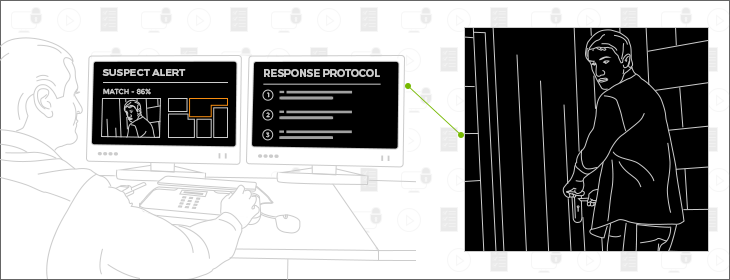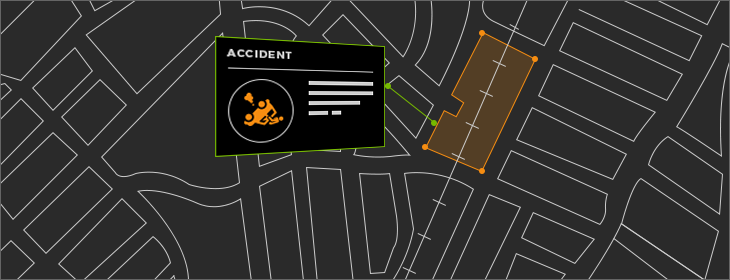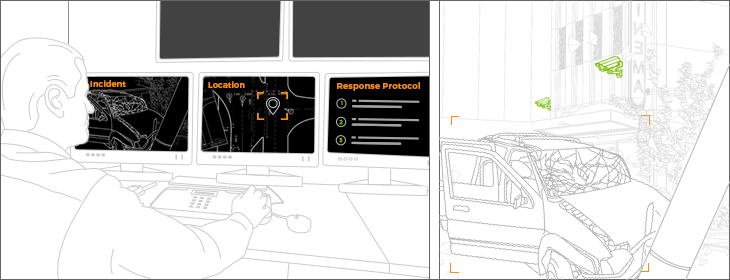Situation Management Features

Kalidarsope’s Situation Management system integrates your network of security and safety devices to create a central command and control system. The system incorporates all type of security devices, though not limited to fire detectors, alarms, access control, motion sensors, POS, GIS / GPS and video surveillance system. The inbuilt features of the system help the enterprises handle a massive amount of data from multiple sources to monitor and control its safety and security. The system would assist in making quick decisions and respond fast to given situations by collating the information such as status’, alarms, alerts, and visuals into a unified user interface. The system allows defining rules that would identify the incidents or potential situation automatically and pinpoint their location in an area map. The predefined response protocol for the event is available for the security operator to act immediately.
The system is fully auditable, logs the activities and has reports that can be customized. All the features of Boston’s Situation Management system are accessible through a web interface.
Intelligent Monitoring

The traditional approach of monitoring is to place an operator keeping track of the video feeds from multiple cameras using several monitors and screens showing numerous videos. Other devices –including access controls, fire/chemical detectors, and motion sensors would serve to raise the alarm. Boston platform creates a layer that integrates all the devices together and they work together to change the way we monitor.
The system identifies the events and potential situation based on activities as they unfold or are detected by different devices and detectors. The operator is alerted of situations and he is provided with the response protocol for the given event. The operator is easily able to communicate to relevant personnel either for intervention or decision or status immediately. Relevant visuals and data relating to identified events are aggregated and can be made use of for later forensic or root cause analysis.
The Monitoring is proactive, preemptive and assists your organization to achieve a more optimized use of assets.
Dynamic Geospatial Mapping

Dynamic Geospatial Mapping provides a visual representation of the location of integrated devices, situation,potential threats, assets, alarms, and people. The system provides real-time mapping of the location information of the devices and the people.
Pinpointing the location of the incident helps in having the support personnel reach the site in less time thereby, reducing the turnaround time for an intervention. It also helps in determining the evacuation route that poses a minimum risk. The location of critical assets and the people nearby, displayed on the map helps in prioritizing the situations.
rules engine

The Situation Management System automatically Identifies and updates the status of the situation as the event unfolds. The system uses a powerful rules-engine to correlate data gathered from your connected devices with both time and geographical metadata. The system uses this data trigger the most appropriate alarm and response protocol thus minimizing false alarms and manual intervention.
A typical rule is to display the proper camera and capture the visual scene when a door alarm has been triggered. Based on the time of the incident, the system may further initiate other pre-configured actions such as locking the door, switching on security lights and closing the parking barriers. The system is adaptive and helps to identify emerging threats and threat levels, to determine the precise response to an escalating situation.
Automated Response Protocol

After analyzing the “What” and “Where” of an incident, the system then attempts to provide answers for the “what to do” and “whom to involve." Every time there is a situation, the Response Protocol Standard Operating Procedures is automatically presented to help security personnel manage the situation without delay.
The rules engine of the Situation Management System is configured to identify the threat level of a given event and decide on the optimal incident response. Along with the map and the visuals of the situation, these step by step guidelines aids the operator handle the situation and provide real-time updates on the incident.
mobile data sharing

The real-time updates in the form of videos,photos,and their assessment are available with the security personnel handling the situation. Situation Management System will enable the security personnel to share this information with the operators using their mobile devices.
The system collates the information once transmitted to the central command with the incident data.
The mobile data sharing facility makes updates available readily assisting with faster decisions.
dynamic reporting

The data such as alarms, video, audio, responses and results that the Situation Management System gathers is available for reporting. The information obtained is collated and stored in a manner that helps in the simple retrieval of reports to assist in policy compliance, investigation, analysis and training. The system reports help in analyzing situations to identify the threats and vulnerabilities. The logs and audit trails available in the system further support in performing post-incident investigation including root-cause analysis.
The periodic reports assist in monitoring and carrying out regular activities such as fire drills, health checks of security assets and assessment of preparedness.